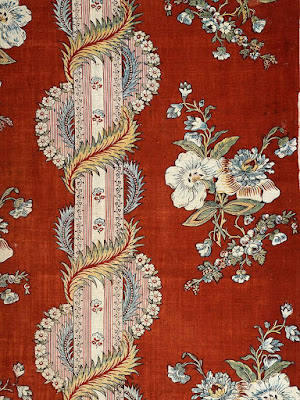.jpg) |
| Louis Le Nain Peasants before their House ca. 1641 oil on canvas Fine Arts Museums of San Francisco (California Palace of the Legion of Honor) |
 |
| Louis Le Nain Peasant Interior ca. 1645 oil on canvas National Gallery of Art, Washington DC |
 |
| Master of the Games Peasant Family ca. 1650 oil on canvas Detroit Institute of Arts |
 |
| Adriaen van Ostade Peasant Meal 1673 drawing, with added watercolor Morgan Library, New York |
-Peasant-Girl-with-Basket-of-Fruit-c1760-pastel-on-vellum-(only-surviving-work)-Galleria-Nazionale-di-Parma.jpg) |
| Ortensia Poncarali Maggi Peasant Girl with Basket of Fruit ca. 1760 pastel on vellum (only known surviving work of this artist) Galleria Nazionale di Parma |
 |
| Pieter Brueghel the Elder The Peasant and the Nest-Robber 1568 oil on panel Kunsthistorisches Museum, Vienna |
 |
| Lucien Simon Breton Peasants seated beside a Menhir ca. 1910 oil on canvas Museum of Fine Arts, Boston |
 |
| Ignacio Zuloaga Spanish Peasants 1905 oil on canvas Alte Nationalgalerie, Staatliche Museen zu Berlin |
 |
| Anonymous Italian Artist Landscape with Peasants 18th century oil on canvas Saint Louis Art Museum |
 |
| David Teniers the Younger Gypsy telling the Fortune of a Peasant ca. 1630-40 oil on canvas Staatliche Kunsthalle, Karlsruhe |
.jpg) |
| David Teniers the Younger Latona turning the Lycian Peasants into Frogs ca. 1640-50 oil on copper Fine Arts Museums of San Francisco (California Palace of the Legion of Honor) |
 |
| Herman van Swanevelt Italianate Landscape with Latona and the Lycian Peasants 1637-38 oil on canvas Gemäldegalerie, Staatliche Museen zu Berlin |
 |
| Jan Brueghel the Elder Latona and the Lycian Peasants 1601 oil on panel Städel Museum, Frankfurt |
 |
| Giuseppe Gambarini Monks soliciting Gifts of Food from Peasants ca. 1719 oil on canvas Staatsgalerie, Stuttgart |
 |
| Jacques d'Arthois Landscape with Peasants attacked by Brigands ca. 1660 oil on panel Staatliche Kunsthalle, Karlsruhe |
 |
| Wilhelm Thielmann Mourning Peasants 1910 oil on canvas Alte Nationalgalerie, Staatliche Museen zu Berlin |
The Airship Era
They'd barely emerged from the deep-green forests
of that epauletted century. Geraniums bloomed on windowsills in Heidelberg.
Student princes eyed the tavern keeper's daughter through the blond foam
of their tankards. The future must have seemed weightless
as it came nosing through the clouds, smooth as a biblical fish
of that epauletted century. Geraniums bloomed on windowsills in Heidelberg.
Student princes eyed the tavern keeper's daughter through the blond foam
of their tankards. The future must have seemed weightless
as it came nosing through the clouds, smooth as a biblical fish
throwing its giant shadow on the sea floor, its thin gold-beater's skin
pressed back against its ribs, cloche-hatted women in fox furs
waving through its observation windows. Composed of too much
dream stuff to be echt matériel, shoals of them congregated silently
dream stuff to be echt matériel, shoals of them congregated silently
over London in the moon's dark phases, concealed above clouds.
Their crews were unnerved by crackling blue halos; eerie lightning
shot from frostbitten fingers as they lowered spy baskets
on trapeze wires below the cloud clover, taking careful soundings.
Those whom they did not kill scarcely believed in them,
improbable contraptions the parchment-yellow color of old maps,
vessels a rational traveler might have chosen, a half-century earlier,
to pursue daft, round-the-world steampunk wagers. But for them –
the gilded aerialists in their giant dirigibles – the world remained a storybook
the gilded aerialists in their giant dirigibles – the world remained a storybook
unfolding endlessly in signs and wonders, over which they drifted
in stylish accidie; leviathan hunters, relaxed as Victorian naturalists.
And up there everything looked different:
the borders absurd, the people in their witch-hunting villages as out-of-date
And up there everything looked different:
the borders absurd, the people in their witch-hunting villages as out-of-date
as peasants in a medieval breviary. The mountains, too, seemed surpassable,
offering an alternative angle on the sublime. Occasionally there was concern:
a tear in the fabric, hooked to a typhoon's tail above the China Sea,
a tear in the fabric, hooked to a typhoon's tail above the China Sea,
or harried by storms across the Atlantic. But how lighter than air they were.
They did not understand, as they fell continually upwards,
how the nature of the element was the price of their rising:
the assiduous atom seeking an exit, thronging the fabric of their cells.
Witness was the privilege of many: newsreels captured the death of a star
and – oh the humanity! – its last leisurely plummet in fire, its ashen armature.
– Caitríona O'Reilly (2015)






-c1650-70-wool-and-silk-tapestry-work-Denver-Art-Museum.png)



-Royal-Ontario-Museum-Toronto.jpg)
-c1890-1900-roller-printed-cotton-Denver-Art-Museum.png)
-c1960-screenprinted-cotton-A-National-Gallery-of-Australia-Canberra.jpg)
-c1960-screenprinted-cotton-B-National-Gallery-of-Australia-Canberra.jpg)


-c1820-30-drawing-Mus%C3%A9e-des-Beaux-Arts-de-Valenciennes.jpg)
-Allegorical-Figures-c1590-95-oil-on-canvas-National-Gallery-Athens.jpg)
-Study-for-Allegorical-Composition-c1652-drawing-Hamburger-Kunsthalle.jpg)
-1522-Solnhofen-limestone-relief-Bode-Museum-Berlin.jpg)



-Bode-Museum-Berlin.jpg)
-Bode-Museum-Berlin.jpg)

-1887-drawing-Hamburger-Kunsthalle.jpg)


-Allegorical-Figure-c1535-36-drawing-(study-for-fresco)-Hamburger-Kunsthalle.jpg)
-Allegorical-Scene-c1585-drawing-Statens-Museum-for-Kunst-Copenhagen.jpg)
















-2002-silk-gauze-and-wire-Philadelphia-Museum-of-Art.jpg)